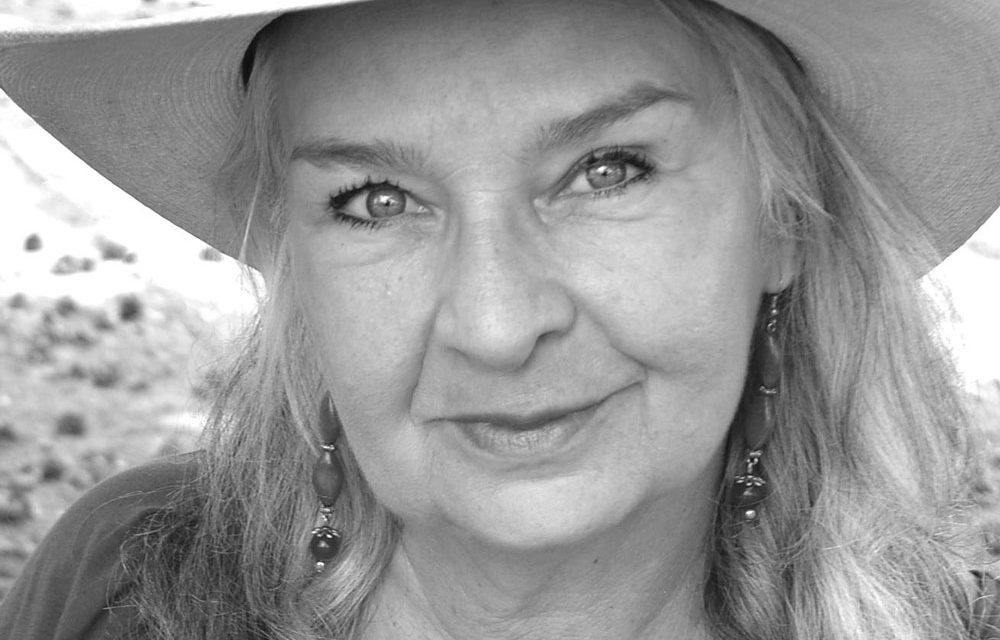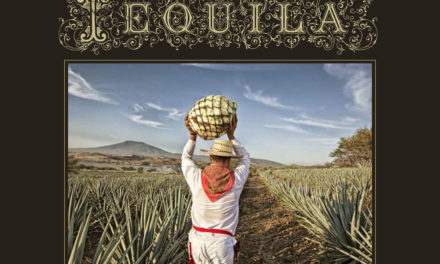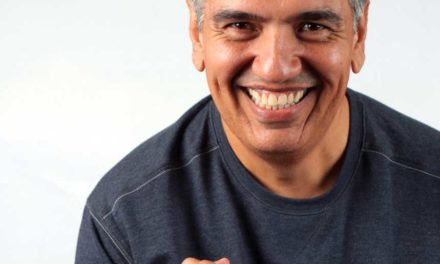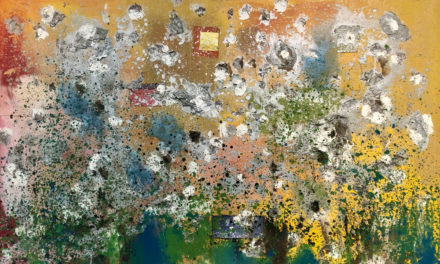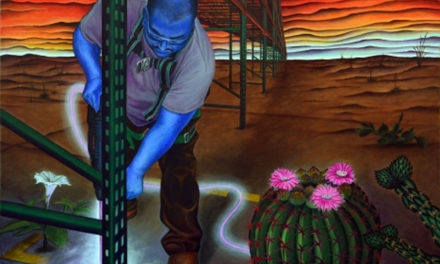Threaded with the remnants of imbibement, Corazon Espinado is a juxtaposition of the spiritual and the commercial, inviting viewers to consider the fine line between what nourishes and what poisons, what brings joy and what brings tribulation and heartache. Molina says,”Corazon espinado con deseo, memoras, sabores, dolores, celebracion y cancion. My fascination with dramatic representations of the sacred heart began with those found at La Iglesia de San Ignacio in El Paso’s Segundo Barrio and the rows of votive candles sold at most border grocery stores.”
Diana Molina, curator for the Icons and Symbols of the Borderland exhibit, has served as the creative director for the Juntos Art Association since 2012. Born a half mile from the US-Mexico boundary, her own artwork across diverse mediums explores the limitations of life on the fringe while appealing to a universal audience.
Drawn early on to the arts and science, Molina began her career path as a software engineer in the initial stages of robotics and automation at IBM. This was followed by a decade working in Amsterdam as a photographer and writer for international magazines, including Elle, Esquire, Geo, Marie Claire, National Geographic Traveler, and Vogue, as well as the book Amsterdam: Small Town, Big City (1996). She also created photographic collections for the Netherlands Bureau of Tourism and Gamma Press with worldwide distribution.
Living among the Tarahumara of northern Mexico for long periods, Molina’s first solo exhibition about the indigenous culture was prepared for the World Museum of Art in Rotterdam. Her exhibits have been widely shown in art and science museums in the United States and Europe, and several of her photo essays are archived at the UT El Paso Special Collections Library and the UT Austin Benson Latin American Collection. Molina has been a part of the New Mexico Humanities Council Lecture Program since 2010 and continues to build on her interest in the connections between art, ecology, and humanity.
Artist Statement:
I illustrate the borders of my homeland and those I cross, not only in the literal sense of a governmental division of territory, but also by the influence of ideologies, customs, politics, economics, and views of life.
Infused at a young age with an affinity to art, science, language, and literature _ observations of nature and the human experience have been a driving force behind my impulse to travel extensively and fuel creative pursuits. Informed early by the borderland Mestiza experience, my work follows layered views of the landscape we inhabit, the systems and frameworks that encase and sustain our place. Within an art and ecology laboratory wholly pervaded by the Chihuahua desert, my studio process begins with personal and collective activism to generate work that speaks to multi-species justice and equity of race and gender. Conceptually motivated by the interwoven relationships of people, land, and culture, I explore a range of mediums and platforms to bring forth perspectives from viewpoints at the crossroads. Frequently, taking a path less traveled, my portable toolkit draws on art and ecology for the potent instruments to re-imagine the change we face.
(Photo by
Kathryn Brandon)

